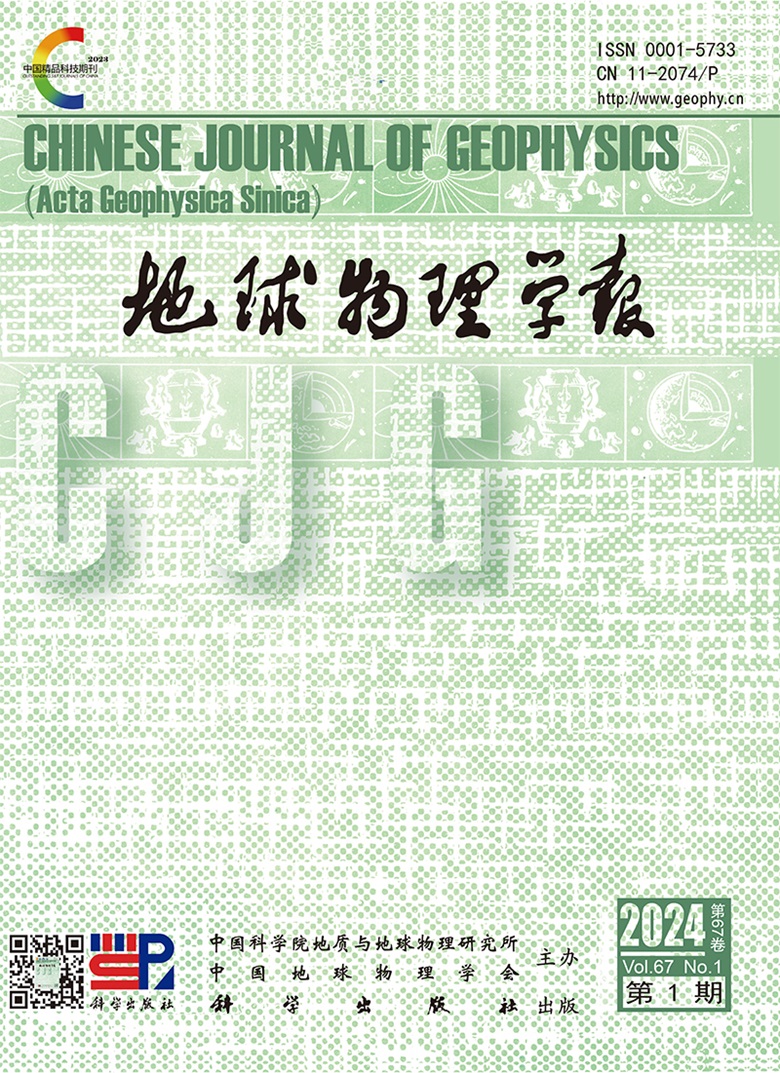Ice sheet mass balance in Antarctica measured by GRACE and its uncertainty
IF 1.4
4区 地球科学
Q3 GEOCHEMISTRY & GEOPHYSICS
引用次数: 11
Abstract
As a critical component of the cryosphere,the Antarctic Ice Sheet(AIS)has strongconnection with the sea level change and global climate change.Accurate quantification of the current spatial and temporal mass changes of AIS is very important to improve our understanding and prediction of its response and contribution to global change.The Gravity Recovery and Climate Experiment(GRACE)mission has provided new and useful observations to detect AIS mass balance since its launch in March 2002.There are significant differences among the GRACE estimates of the total mass change.The big difference is due in part to considerable uncertainty in the accuracy of glacial isostatic adjustment(GIA)signals,and also due to use of different time spans,different versions of GRACE products and different GRACE post-processing methods.Using 124 monthly GRACE gravity field solutions of Release 5(RL05)produced at the Center for Space Research(CSR)of the University of Texas,Austin,spanning the interval from January of 2003 through December of 2013,the mass balance of AIS is estimated by two postprocessing ways:the optimizing averaging kernel method(also named VW)and the combined filter method(the first step is called P5M11 decorrelation filter to remove correlated noise by fitting and subtracting a fifth-order polynomial to even and odd coefficient pairs at spherical harmonic orders eleven and above,the second involves smoothing with a 250 km Gaussian filter).A detailed error analysis is provided including consideration of leakage-in,leakage-out,and errors in modeling mass variations of the atmosphere,ocean and GIA.In addition,a statistical model selection criterion is employed in computation of trends from mass variation time series,and the impact of K1 tidal alias is analyzed.The results reveal that during 2003—2013,the total mass of the ice sheet decreased significantly at change rates of-163±50,-129±41and-81±27Gt/a for three GIA models:GW13,IJ05,W12 a.There was a distinct region with mass loss in the Amundsen Sea Embayment of West Antarctic ice sheet and the Northern Antarctic Peninsula,while an increasing mass gain was concentrated in the Dronning Maud Land and the Enderby Land of East Antarctic ice sheet.Furthermore,we use hypotheses testing and information criteria evaluation to select the best trend model fitting together with sinusoidal functions of annual(365.0-d)and semi-annual(181.0-d)signals and the S2(161.0-d),K1(2725.4-d)and K2(1362.7-d)tidal aliases.We found that K1 tidal alias has a potential to falsify the acceleration estimates.Although it is not good enough to confirm the K1 tidal alias based on an eleven-year time-series,the impact of K1 tidal alias deserves further notice.By comparing the quantities of total mass balance computed by the two different processing methods and three different GIA models in the Antarctica,we find that the differences are less than 15Gt/a between two processing methods,but the largest difference is about 80 Gt/a between different GIA models.The analysis of the uncertainty of GRACE′s estimation of AIS mass balance indicates that the largest source of error is the GIA correction.Our results indicate that during January 2003 to December 2013 the contribution of AIS to sea level rise was about+0.34±0.11mm/a.Significant mass loss increases were limited to the basin that contains Pine Island Glacier along the Amundsen Sea coast of West Antarctica.During the analyzed time period,the total mass acceleration was-8±10Gt/a2,equivalent to+0.02±0.03mm/a2 sea level rise.Results of analysis point to the conclusion that when using agiven GRACE data set with same error correction,the differences of total mass changes are not highly dependent on which post-processing strategies to be used but on the different GIA models.Therefore,a more accurate GIA model is the key for determining Antarctic ice mass change from GRACE in the present and future.GRACE测量的南极洲冰盖物质平衡及其不确定性
南极冰盖作为冰冻圈的重要组成部分,与海平面变化和全球气候变化有着密切的联系。准确量化当前AIS的时空质量变化,对于提高我们对AIS对全球变化的响应和贡献的认识和预测具有重要意义。重力恢复和气候实验(GRACE)任务自2002年3月发射以来,为探测AIS质量平衡提供了新的和有用的观测资料。GRACE对总质量变化的估计有显著差异。这种巨大的差异部分是由于冰川均衡调整(GIA)信号精度的相当大的不确定性,也由于使用不同的时间跨度、不同版本的GRACE产品和不同的GRACE后处理方法。利用2003年1月至2013年12月期间由美国德克萨斯大学奥斯汀分校空间研究中心(CSR)制作的124个GRACE第5版(RL05)月度重力场解,通过优化平均核法(也称为VW)和组合滤波法(第一步称为P5M11去相关滤波,通过拟合和减去一个五阶多项式来去除相关噪声)两种后处理方法来估计AIS的质量平衡以及11次及以上球谐次的奇系数对,第二个涉及到用250公里高斯滤波器进行平滑)。提供了详细的误差分析,包括考虑漏入,漏出,以及在模拟大气,海洋和GIA质量变化时的误差。此外,采用统计模型选择准则计算质量变化时间序列的趋势,并分析K1潮汐混叠的影响。结果表明:2003-2013年,GW13、IJ05、W12 a 3种GIA模式的冰盖总质量以-163±50、-129±41和81±27Gt/a的变化率显著减少,南极西部冰原阿蒙森海岬和南极北部半岛存在明显的质量损失区域,而南极东部冰原Dronning Maud Land和Enderby Land的质量增加集中。此外,通过假设检验和信息准则评价,选择了与年(365.0-d)和半年(181.0-d)信号正弦函数以及S2(161.0-d)、K1(2725.4-d)和K2(1362.7-d)潮汐别名拟合的最佳趋势模型。我们发现K1潮汐别名有可能伪造加速度估计。虽然根据11年的时间序列来确定K1潮汐别名还不够好,但K1潮汐别名的影响值得进一步关注。对比两种不同处理方法和三种不同GIA模式计算的南极洲总质量平衡量,发现两种处理方法之间的差异均小于15Gt/a,但不同GIA模式之间的最大差异约为80 Gt/a。对GRACE估计AIS质量平衡的不确定度分析表明,最大的误差来源是GIA校正。结果表明,2003年1月至2013年12月,AIS对海平面上升的贡献约为+0.34±0.11mm/a。显著的质量损失增加仅限于西南极洲阿蒙森海沿岸包含松岛冰川的盆地。在分析时段内,总质量加速度为-8±10Gt/a2,相当于海平面上升+0.02±0.03mm/a2。分析结果表明,当使用相同误差修正的给定GRACE数据集时,总质量变化的差异并不高度依赖于采用哪种后处理策略,而是取决于不同的GIA模型。因此,一个更精确的GIA模型是确定GRACE在现在和未来南极冰质量变化的关键。
本文章由计算机程序翻译,如有差异,请以英文原文为准。
求助全文
约1分钟内获得全文
求助全文

 求助内容:
求助内容: 应助结果提醒方式:
应助结果提醒方式:


